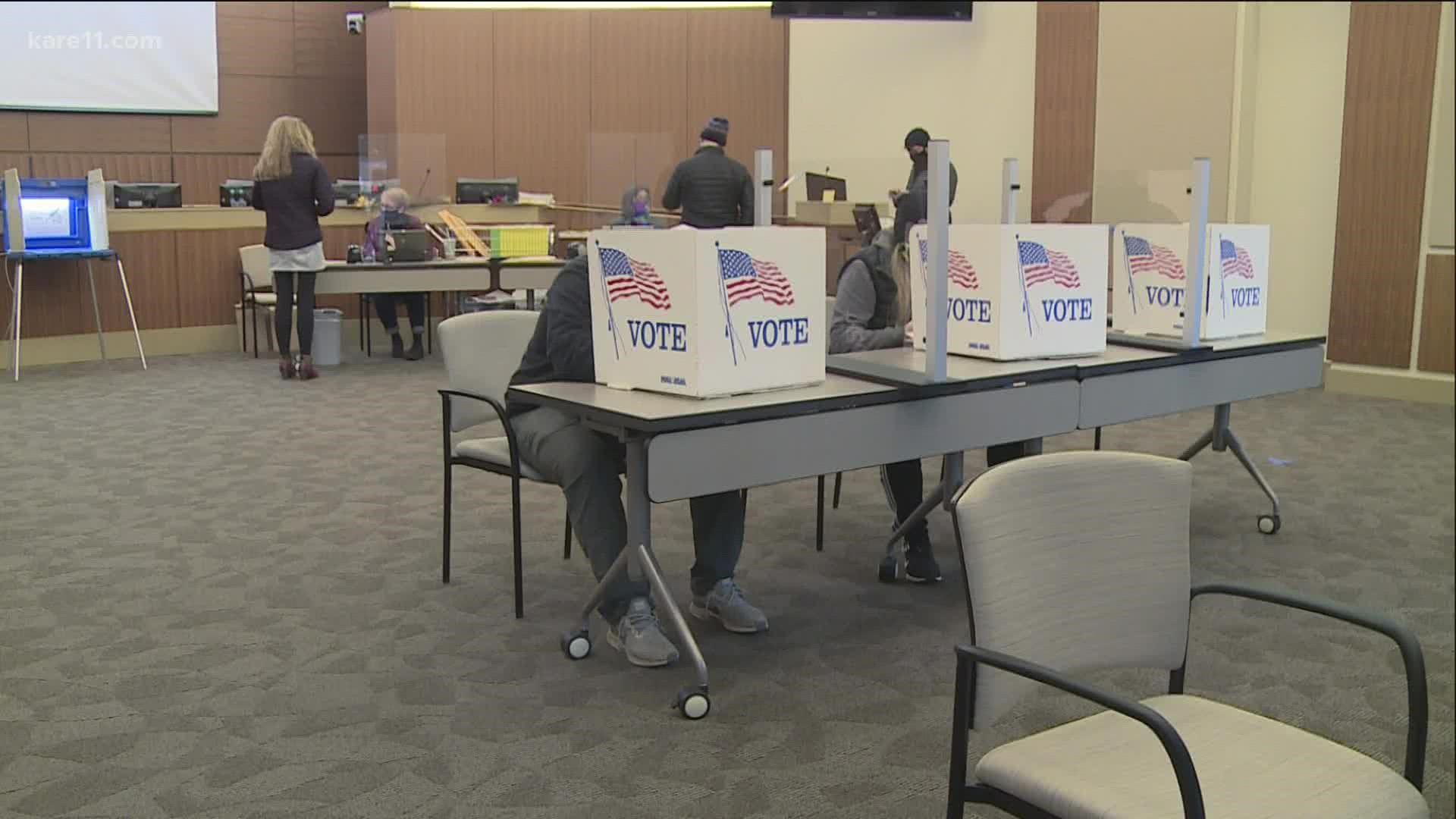MINNEAPOLIS — You've done your research and you're ready to rock that coveted red sticker, but when you get your ballot, you're surprised to find you'll have to vote for not one, but three(!), candidates.
Enter: ranked-choice voting (RCV).
Only five cities in Minnesota use this ballot-casting procedure in their local elections. So, how does it work?
What is ranked-choice voting and who uses it?
Minneapolis and St. Paul passed and implemented ranked-choice voting (RCV) systems more than a decade ago, which was followed about a decade later by St. Louis Park. Minnetonka and Bloomington residents then embraced the method for their respective cities in 2020, all allowing their voters to pick their top choices for candidates on a scale of one to three.
That way, if your top candidate is eliminated as votes are tallied, your vote then counts toward your second, and if necessary, third, choice.
But RCV doesn't stop at Minnesota's borders — currently an estimated 13 million voters across the country and millions of others in democracies all over the world — use RCV to decide their elections.
What's the point?
According to FairVote Minnesota, the process "levels the playing field" and "improves and strengthens our democracy," giving voters "more choice and more voice."
The organization says RCV achieves this by:
- Not having to choose only between two major parties, ensuring results that "accurately reflect" the members of a community and their spectrum of respective political beliefs.
- Encouraging positive campaigning on issues that matter to their communities, as an effort to incentivize voters who might not make that candidate their first choice, at least their second or third.
- Eliminating the third-party "spoiler problem," by weighing candidates — no matter their party — equally.
- Lowering barriers for typically underrepresented communities, in part, by eliminating a summer primary, which data shows has made a positive impact on voter turnout and participation in a fall election overall.
- Saving the city, taxpayers and candidates time and money by nixing the primary and combining the two separate elections into one general election in November.
How do election staff determine results?
As mentioned above, if one candidate gets a majority of first-choice votes — that's 50%, plus one vote — the election is over. At that point, it’s like any other election.
If none of the candidates pass that mark, they move to the next phase of tabulations and eliminations, an "instant runoff," which continues until a winner is reached.
Again, election officials argue that RCV allows voters to actually see their efforts in action by discouraging a two-party, "winner-take-all" election system.
What are the cons of RCV?
Well, that depends on who you ask.
For voters, they say one of the biggest reasons to be weary of RCV is because they feel it can be too complicated.
Though it's true that fear of change is just a part of human nature, FairVote says those who use the system in Minnesota overwhelmingly prefer it over the former plurality process.
Where does RCV in Minnesota go from here?
A DFL-led bill was introduced to the state legislature earlier this year, calling for RCV to be instituted statewide in both local and federal election cycles by 2026.
At the time, Minnesota Democratic Secretary of State Steve Simon said the state wasn't "yet ready for statewide ranked-choice voting," stating the method has "a lot of moving parts."
Following much back-and-forth from lawmakers during this year's session — which amounted to a significant whittling down of the bill's provisions — it looks as if RCV is still a ways out from being mandated in every community across the state.
WATCH MORE ON KARE 11+
Download the free KARE 11+ app for Roku, Fire TV, Apple TV and other smart TV platforms to watch more from KARE 11 anytime! The KARE 11+ app includes live streams of all of KARE 11's newscasts. You'll also find on-demand replays of newscasts; the latest from KARE 11 Investigates, Breaking the News and the Land of 10,000 Stories; exclusive programs like Verify and HeartThreads; and Minnesota sports talk from our partners at Locked On Minnesota.
- Add KARE 11+ on Roku here or by searching for KARE 11 in the Roku Channel Store.
- Add KARE 11+ on Fire TV here or by searching for KARE 11 in the Amazon App Store.
- Learn more about the KARE 11+ app for Apple TV in the Apple App Store.
- Learn more about KARE 11+ here.

